Here are the most interesting attractions not to miss
Exploring Prague: what to see in 3 days, the Old Town and New Town, and the most fascinating spots for you!
History of the City
Prague was founded in the 9th century around a manor house built on the left bank of the Vltava River.
This site soon became an important trade centre thanks to its strategic location.
In 1346, Charles IV, King of Bohemia and Emperor of the Holy Roman Empire, made Prague the capital of his empire.
Then, over the following centuries, Prague experienced numerous political and social changes.
During World War II, Prague was occupied by Nazi forces, and after the war, it fell under Soviet control.
In 1968, the Prague Spring, an attempt to liberalise the communist regime, was brutally suppressed by Warsaw Pact forces.
However, in 1989, the Velvet Revolution led to the end of the communist regime and a democratic rebirth.
In 1993, after the peaceful separation of Czechoslovakia, Prague became the capital of the Czech Republic.
Today, the city is a vibrant cultural and tourist centre, famous for its historic architecture, exhibitions, and lively arts scene.
Prague has become one of the most popular tourist destinations in Europe, maintaining its rich historical and cultural heritage intact.
Charles Bridge
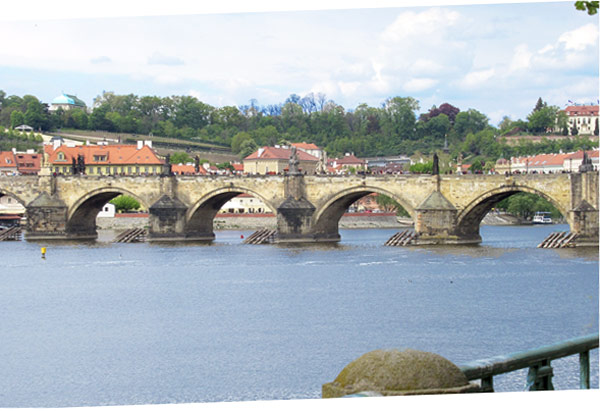
1 – The Stone Bridge, also known as Charles Bridge, was started in 1357 at the behest of Charles IV and completed in 1402.
Built with sandstone blocks, it is fortified by towers on both sides.
Between 1683 and 1928, 30 statues of saints were installed on the bridge’s pillars.
In the evening, the lanterns that illuminate the bridge create a particularly evocative and surreal atmosphere.
Karlova Street

2 – The narrow and winding Karlova Street is a pedestrian passage that connects Mala Strana and Stare Mesto, the two historic districts of Prague.
It is impossible to avoid, as it is one of the most famous streets in the city and is included in all the itineraries of the historic centre.
Karlova Street is part of the historic route that connected the Royal Court to their residence, a path that future kings followed on the day of their coronation.
Although it is difficult to imagine a grand procession parading along this narrow and crowded street, it is still pleasant to walk along it, admiring the various Gothic and Renaissance houses, the Baroque portals, and the shop windows.
Havel’s Market
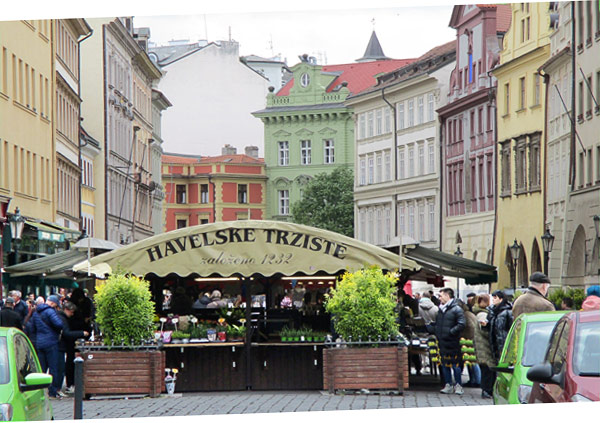
3 – It is the only remaining market square in the historic centre of Prague, located on Havelská Street, dating back to 1232.
Today it offers a variety of fruit and vegetables and, thanks to its central location, many souvenirs for tourists as well.
Old Town

5 – It represents the medieval heart of the city. It’s no surprise that at any time of day, there is always a bustling crowd of tourists.
Its extraordinary historical atmosphere, characterised by Gothic houses and churches, picturesque cobbled streets, and stone towers, blends harmoniously with modernity.
A wide selection of bars, restaurants, nightclubs, international brand shops, galleries, and hotels breathes life into the Old Town. The nightlife here is bound to be unforgettable.
The main square of Prague’s Old Town is called Staroměstské náměstí, recognisable by the Astronomical Clock, the Church of Our Lady before Týn, and the monument to Jan Hus.
Astronomical Clock
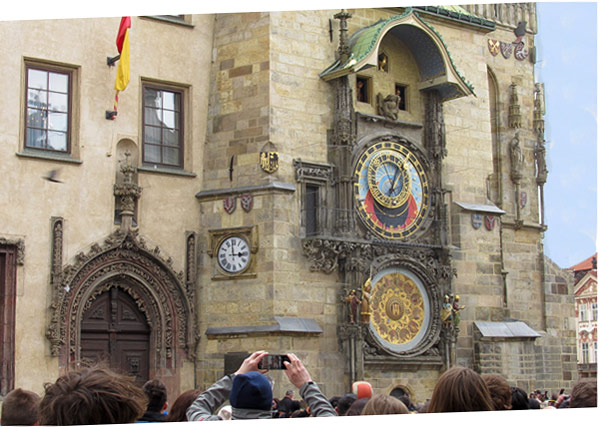
4 – It is one of the oldest and most famous astronomical clocks in the world, installed in 1410 and later improved over the following centuries.
To fully understand and appreciate it, a quick glance isn’t enough. Here are its main parts in summary:
Astronomical Dial: It shows the position of the sun and the moon in the sky, the zodiac signs, and some astronomical details like Bohemian time and sidereal time.
Calendar: A disc below the astronomical dial displays the months of the year with representations of the zodiac signs and rural scenes.
Procession of the Apostles: Every hour, from 9:00 AM to 9:00 PM, the figures of the twelve apostles appear in the two windows above the clock.
Other Moving Figures: It includes animated figures such as Death (a skeleton ringing a bell), Greed (represented by a man with a bag of money), Vanity (represented by a man with a mirror), and the Turk (represented by a man with a mandolin).
The Dancing House
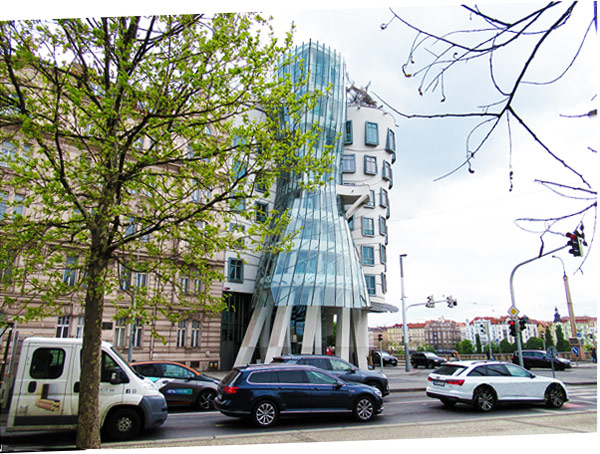
6 – Built in 1996, the Dancing House is considered one of the pillars of modern Prague architecture.
Inspired by the dance style of the famous couple Fred Astaire and Ginger Rogers, it is an extraordinary and atypical urban building that nevertheless harmonises perfectly with the surrounding buildings.
The building houses several offices, a hotel, a new café, a luxury restaurant with a terrace, and a beautiful view.
Here’s what to do in Prague in 3 days:
You might be interested:
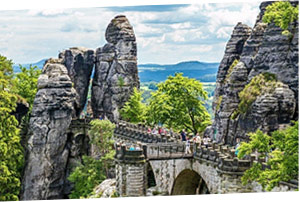
Take a DAY TRIP in small groups from Prague to explore a Czech landscape so picturesque it’s known as the Bohemian Switzerland National Park.

